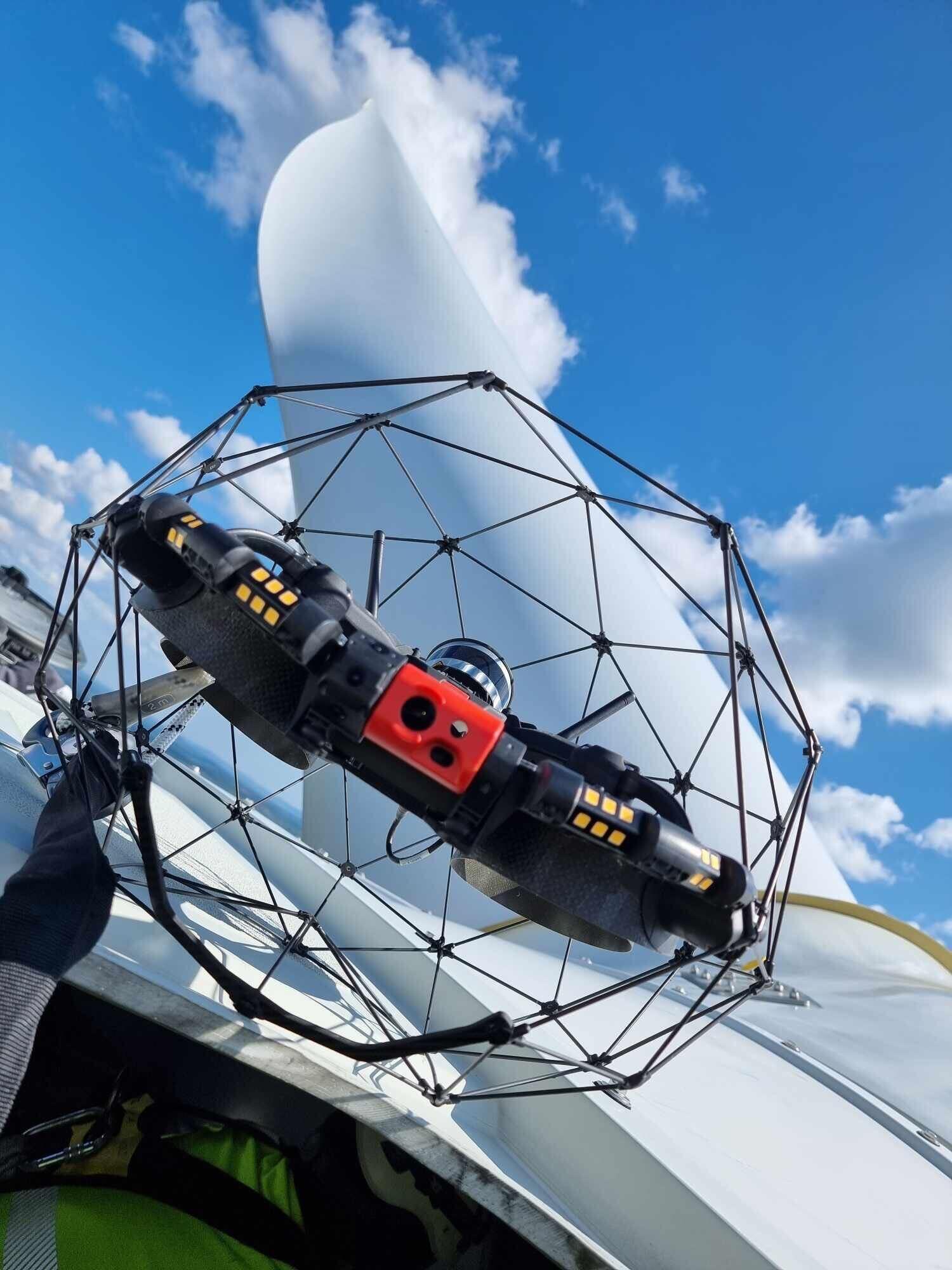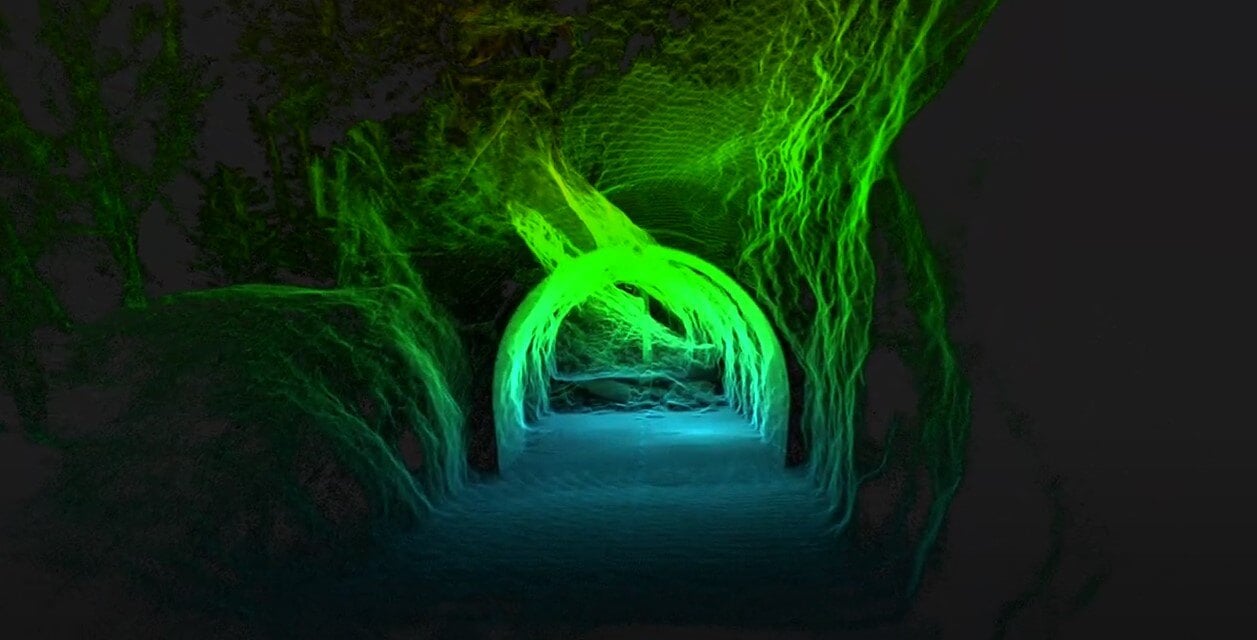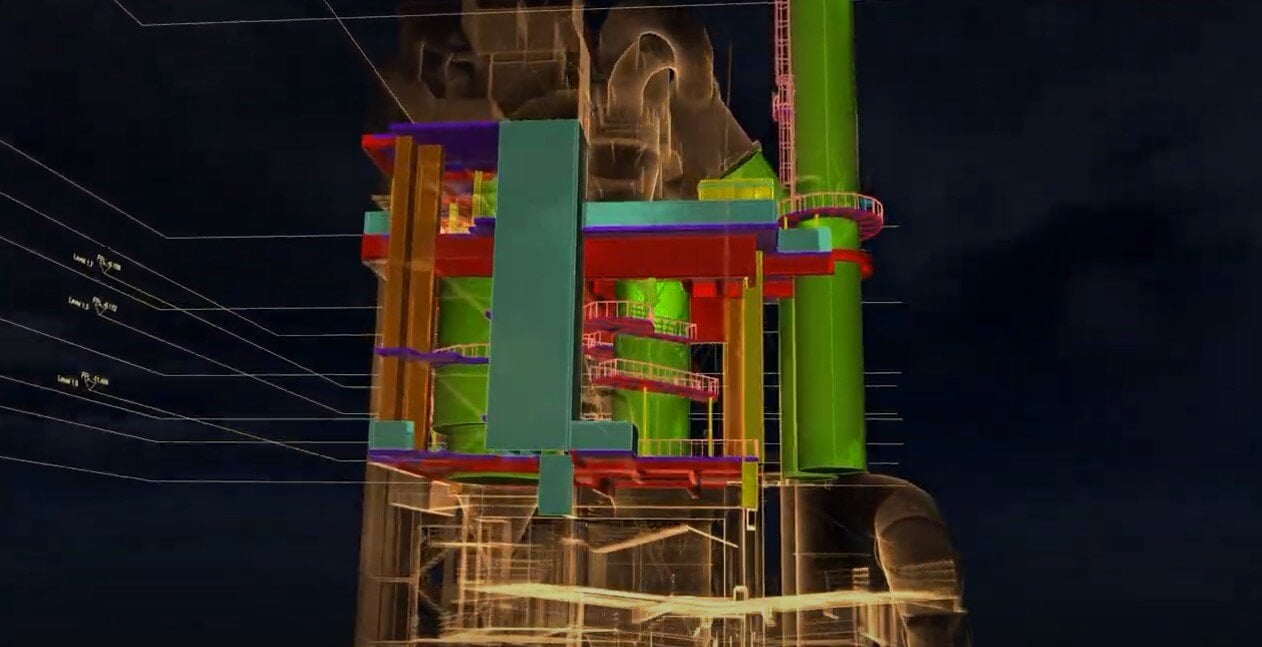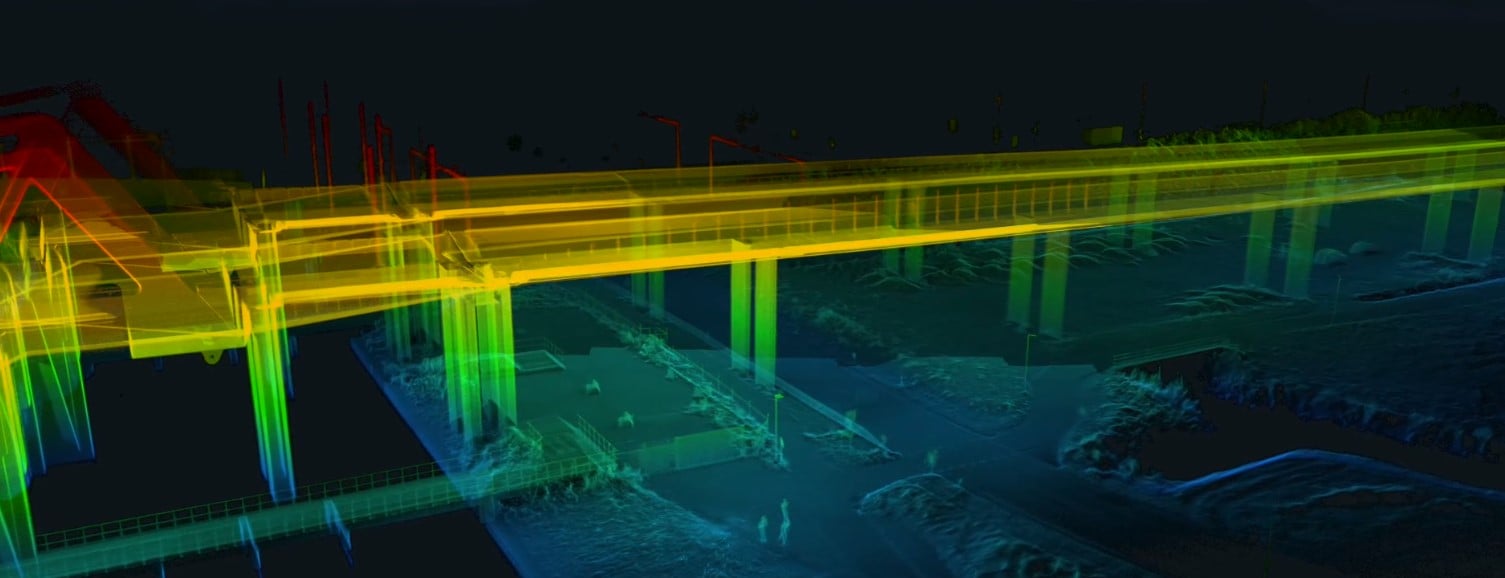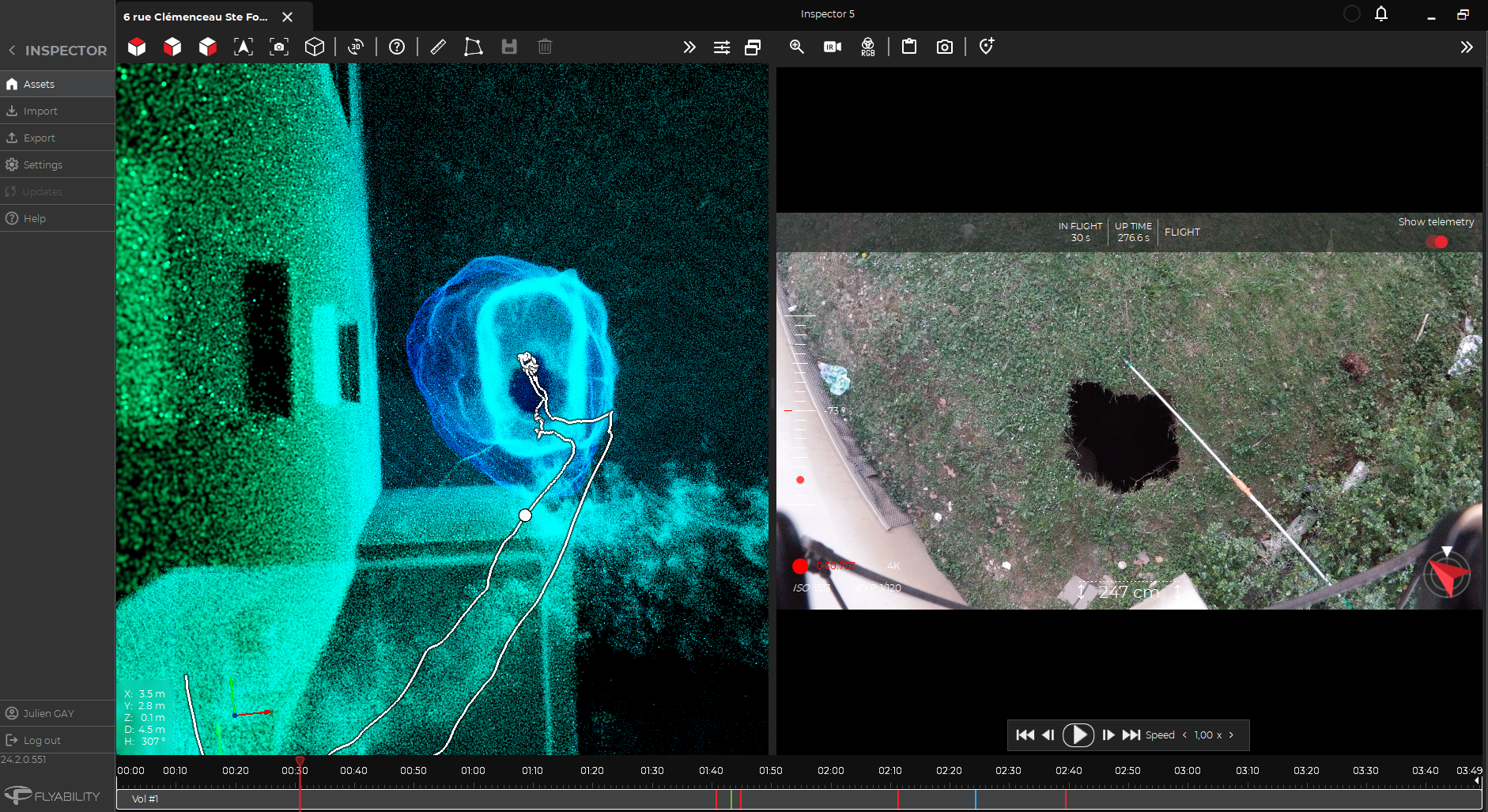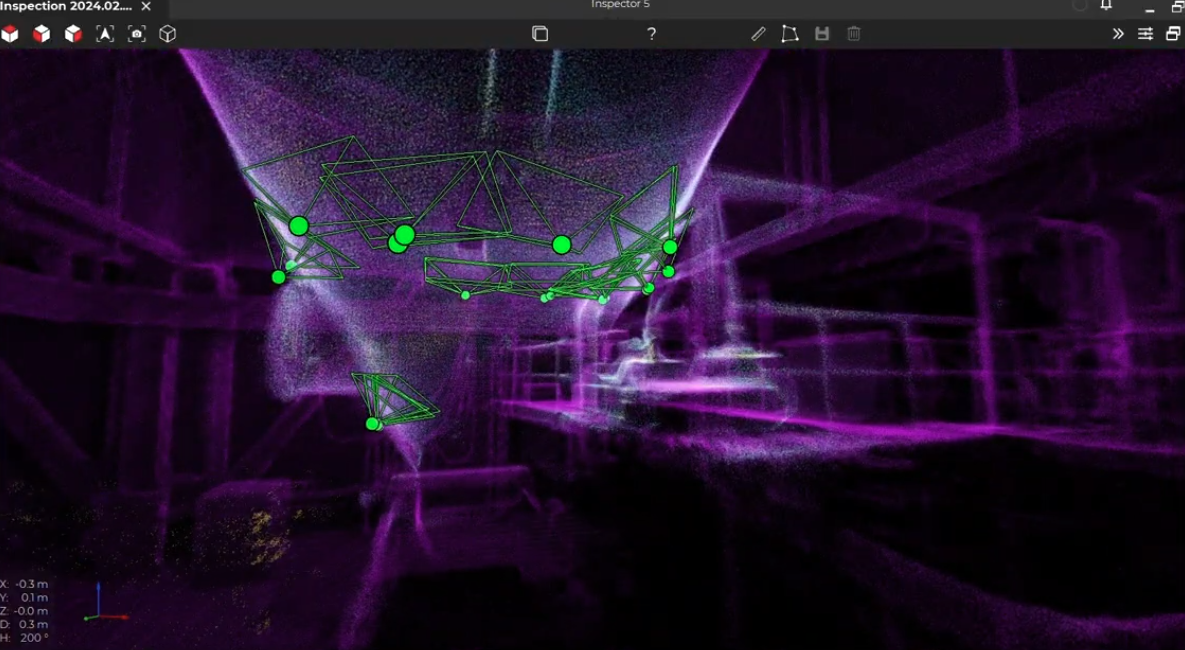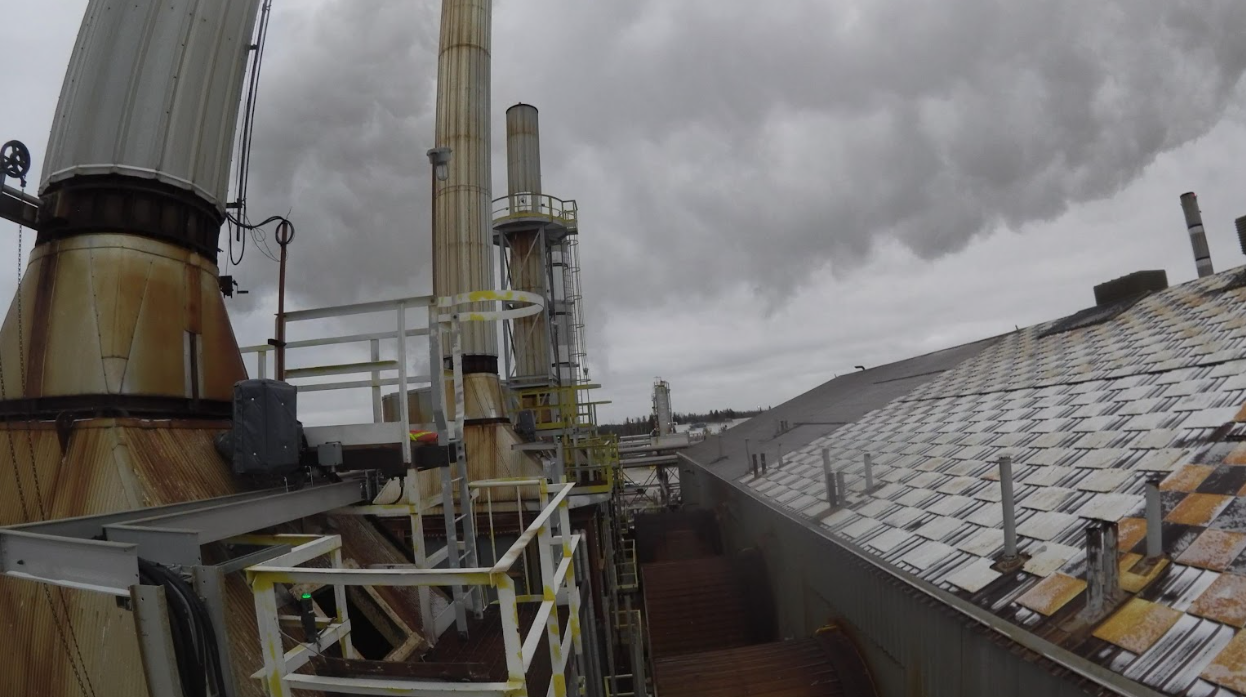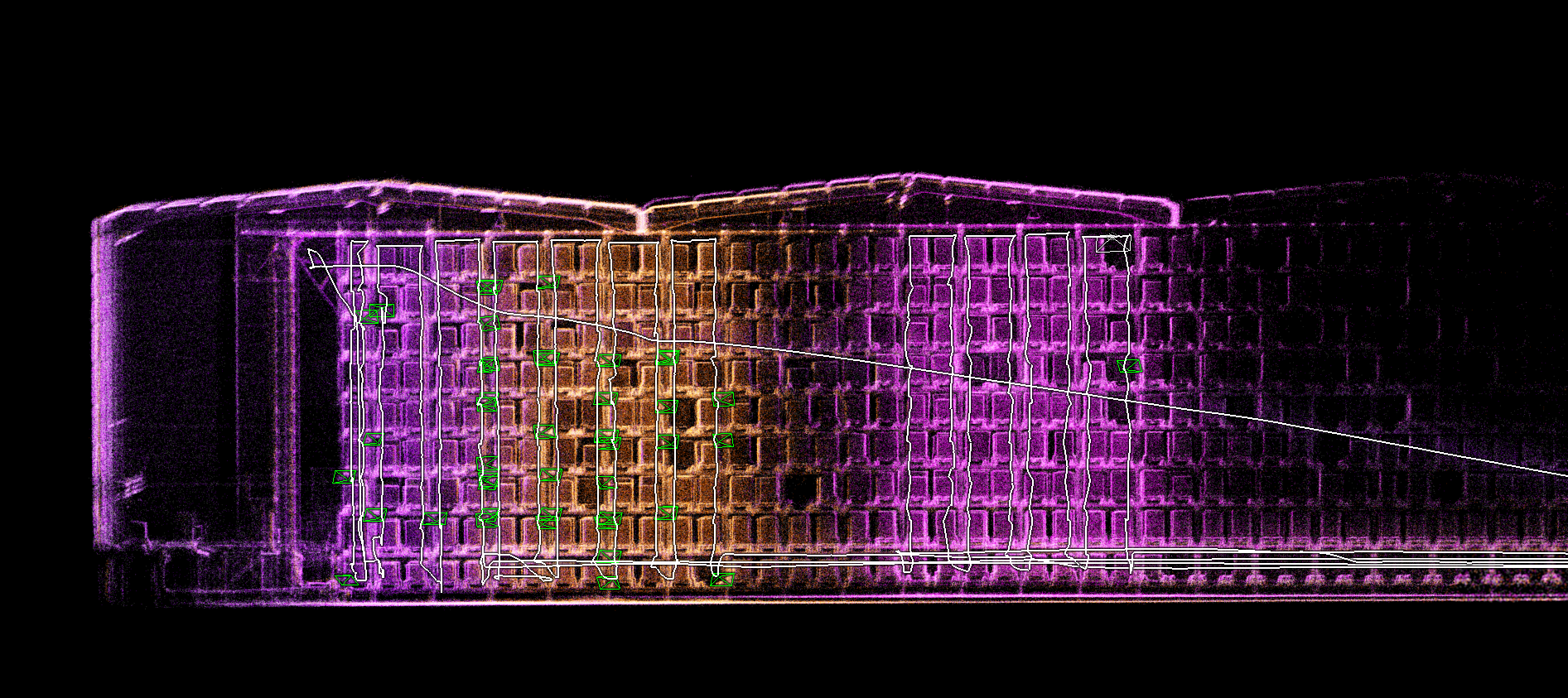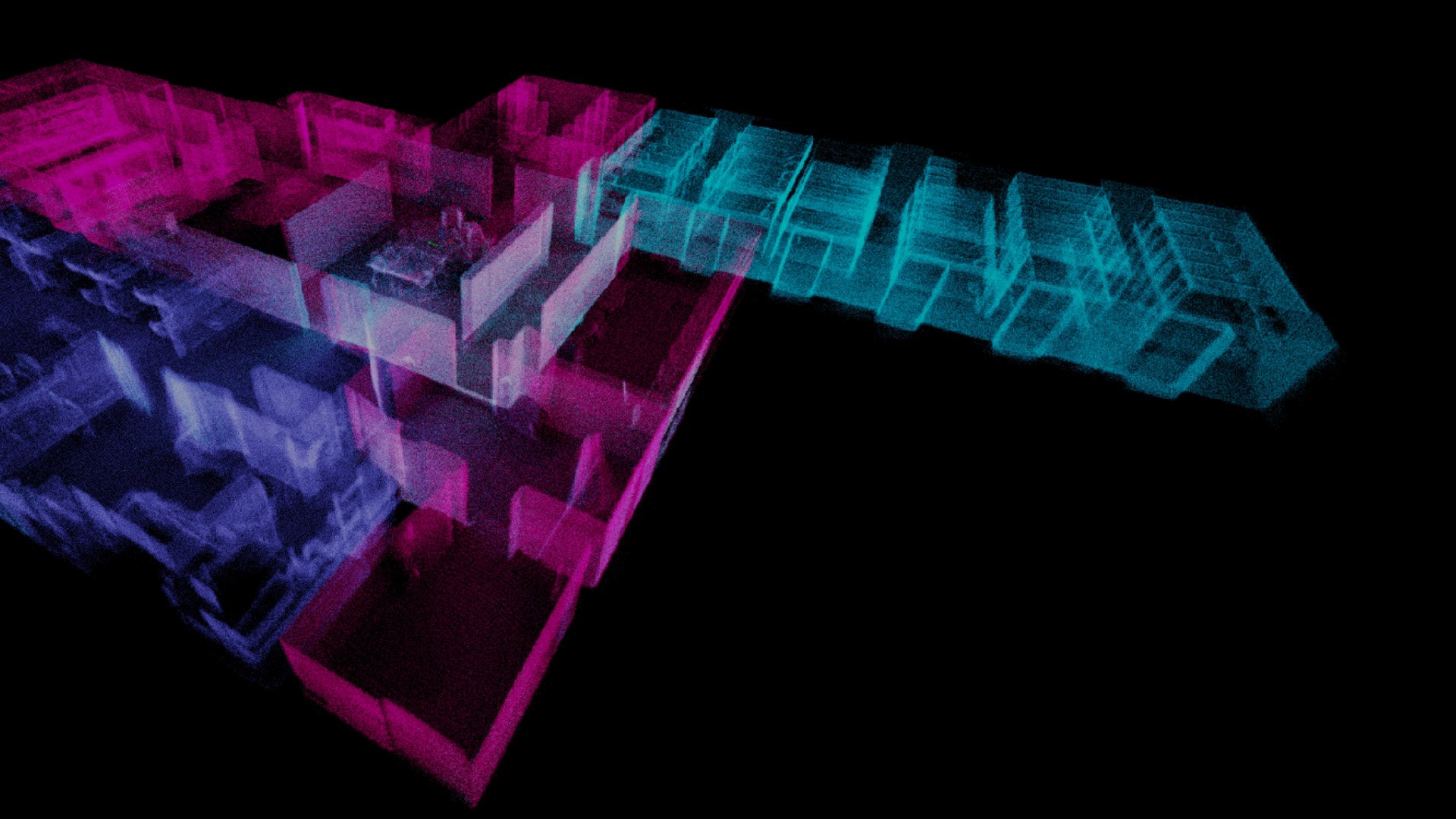- Case Studies >
- Eliminating downtime for a train station roof inspection...
Eliminating Downtime For A Train Station Roof Inspection With Elios Drones
With pressure to avoid disruption to rail activity, this inspection team in the Netherlands turned to the Elios 3 for a drone inspection of the roof of a train station.
Benefits In A Nutshell
|
Access The structure of this train station made it impossible to safely reach the roof for an inspection. Traditional inspections would require train downtimes planned 13 weeks in advance. Instead, the Elios 3 flew around the areas of interest to gather data during the night. |
No Downtime By flying at night and using the Elios 3, the NS Stations team did not need to disrupt rail traffic. This in turn meant there were no changes to public transport due to this inspection. In the past, work on the roof would require 3 train lines to be closed and the catenary to be voltage free. |
|
Safety With the structure being impossible for people to easily access, the Elios 3 presented an ideal solution for gathering data without risks to staff or disruptions to passengers.
|
Speed Data collection was completed at night, when it would be safer to operate with fewer trains and people around, and was completed in just two flight sessions.
|
Delays to public transport on railways are something everyone wants to avoid. They cause frustration as people’s plans go awry, and if a cargo train is delayed, the whole supply line can be held up, slowing down work potentially hundreds of kilometers away from where the delay occurred.
The careful maintenance of trains and the associated infrastructure, such as rails, signal boxes, and railway stations, is thus critical to keeping everything running smoothly. When it comes to stations, it is hard to inspect the certain structures like the roof if trains are moving along the platforms. So what is the solution?

The Elios 3 has already inspected a railway bridge - but what about a train station?
Customer Needs: Accessing The Roof Structure Of A Train Station
Vortex Hardware & Maintenance BV, a drone and robotics specialist and Flyability partner in the Netherlands, has worked with the national service, NS Stations, on maintenance projects at various railway sites around the country. They have completed several successful projects and Proof-of-Concepts to do with the inspection of railway station infrastructure. The train stations range in size, age, and design.
At one particular station, there was a concern over the metal beams in the roof. The station had been built in the early 1900s, and the managers were facing a challenge of how to best inspect the roofing. The space between the metal weight-bearing structures and the overall roof needed to be carefully analyzed, however safe access by people was impossible without scaffolding that would have disrupted rail activity. They needed to find a solution, or else maintenance work would be planned based on “worst-case scenario” assumptions with no other data available.
The Elios 3 presented a solution to the inspection needs that would be a safe tool to gather data without disrupting the station’s operations.
Solution: Inspecting A Train Station With The Elios 3
Sep Schetters and Remco Bunder of NS Stations had already worked with Ruben of Vortex, so he knew they could use an Elios drone for this project. The Elios 2 had already been tested at a separate station, where it had been used to analyze a pedestrian bridge with 2 technical rooms on it, as well as the interior of the bridge via access through manholes. That bridge had been deemed complicated to inspect because of its structure and the difficulty of access, but the Elios made it simple.

The LiDAR scan of the train station with the Elios 3 was able to capture complex structures, including this protruding element in the roof
For this station in the West of the Netherlands, Ruben, Remco, and Sep were confident that the Elios 3 could gather the necessary data. They chose to use the Elios 3 for data collection as its LiDAR payload would be able to better pinpoint the location of defects and anomalies in processing Inspector. In collaboration with NS Stations and ProRail, they planned to gather data about the overall building structure and cable locations by using a LiDAR scanner on the ground in order to safely plan the drone flight. This would help them to follow official restrictions regarding flying the drone in proximity to people and trains. There are rules in place across Europe that forbid the use of drones in close proximity to people and/or crowds.
They planned for the inspection to be done with trains still in operation, however, it is forbidden to fly directly over a train. So they decided to do the inspection flights at night when there would be fewer trains as well as fewer people who might be distracted by the drone. They were also operating in the control zone of a nearby large airport, and as some Elios flights took place outside of the station building, the team also coordinated with Air Traffic Control during their drone flights.
Results: Flying The Elios 3 At Night
With the space between the roof, cables, and metal beams all carefully measured with LiDAR, Ruben began to scout the area with his Elios 2 drone.

The Elios 3 flew at night around the station to gather data - can you spot it in the photo?
Once he had some reconnaissance data, he returned on a separate date with the Elios 3. He flew a pre-planned route, checking areas that the station managers were particularly concerned with as well as conducting a general review. The flight was done with a construction adviser on-site who helped guide optimal data collection by pointing out areas of interest.
The only challenge was ensuring no flights took place at the same time as a train moving through the station. The team coordinated to have 2 observers on the platform in radio communication with Ruben to warn him about incoming trains to ensure he did not fly with a train in operation.
The Benefits Of The Elios 3 Drone For Infrastructure Inspections
In the past, an inspection of this nature would have to be done at the same time as maintenance when scaffolding was in place. In addition, 3 train lines would have to be closed for maintenance, the catenary cable voltage turned off, and prior approval granted at least 13 weeks before. This is a significantly slower process as it provides no data for pre-planning, and has limited overall situational awareness. In addition, there must be a strict schedule for this sort of work, such as every 10 years, in order to proactively prepare for problems rather than work as needed.

The entire building structure could be visualized with the LiDAR point cloud, along with distance measurements
The risks associated with this inspection were greatly reduced thanks to using the drone. Access for inspections is not safe due to the electrocution hazard from the catenary and collision hazard from trains. In addition, the drone’s built-in lighting system, measuring 16,000 lumens, made visibility clear even though the flights took place at night. The adaptability of the drone as well as its usability in confined and complex spaces made it the ideal solution for this project.
The Elios 3 In Future Railway Infrastructure Inspections
Both Vortex and NS Stations were already confident in the use of drones for inspections - they even made national news in the Netherlands for their work with drones in the past. This new project has unlocked another level of detail for train station managers. It provided better situational and site awareness than had ever been previously available while still keeping staff and passengers safe.
Where maintenance work is not possible, the full renovation of a station must be planned at least 2 years in advance. However, this time, maintenance work was done only where it was needed without having to shut down or significantly reduce the operations of the entire station. Alongside the safety benefits, there are huge cost savings reaching millions of Euros through not having to entirely renovate the station in addition to time saved by having accurate site data to plan maintenance beforehand.

The Elios 3 saved weeks of work, unnecessary work at height, and did not disrupt rail traffic
ProRail, the client for this platform roofing project, said, “The use of the Elios 3 for the inspection of roofs above train tracks and platforms is a great alternative to regular visual inspections. The use of drones ensures that we are more flexible, because, for example, it is not necessary to build scaffolding structures before we can do the actual visual inspection. This saves a lot of time, but also a lot of inconvenience for travelers and downtime for train traffic. Moreover, it offers the opportunity to inspect assets in a much more targeted manner.”
With this workflow, railway station managers can be proactive in maintenance work, rather than being limited to a maintenance schedule that estimates the condition of assets - assets they can now see in 3D from the screen of their computer thanks to the Elios 3 drone.
Discover more about the Elios 3 and its applications












